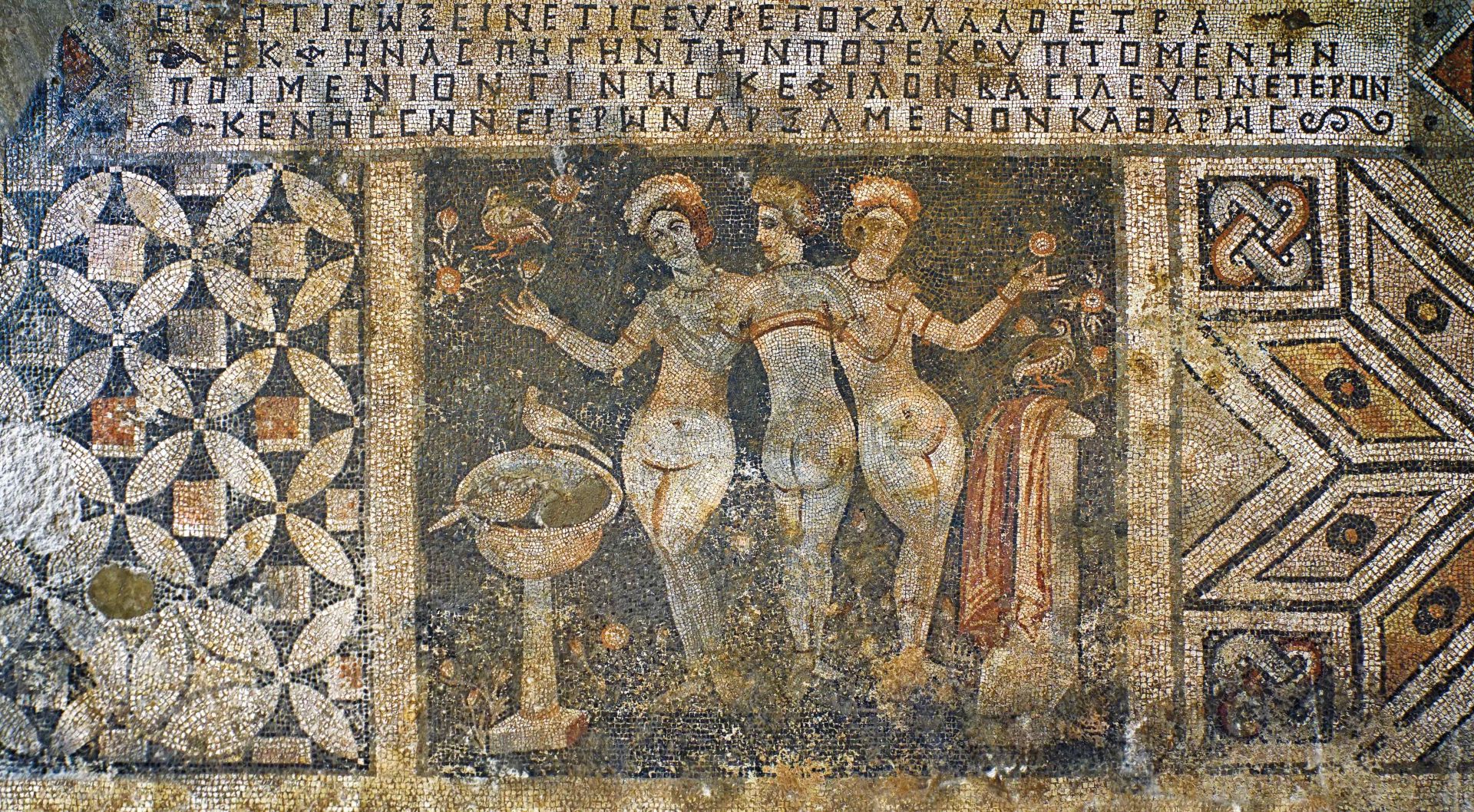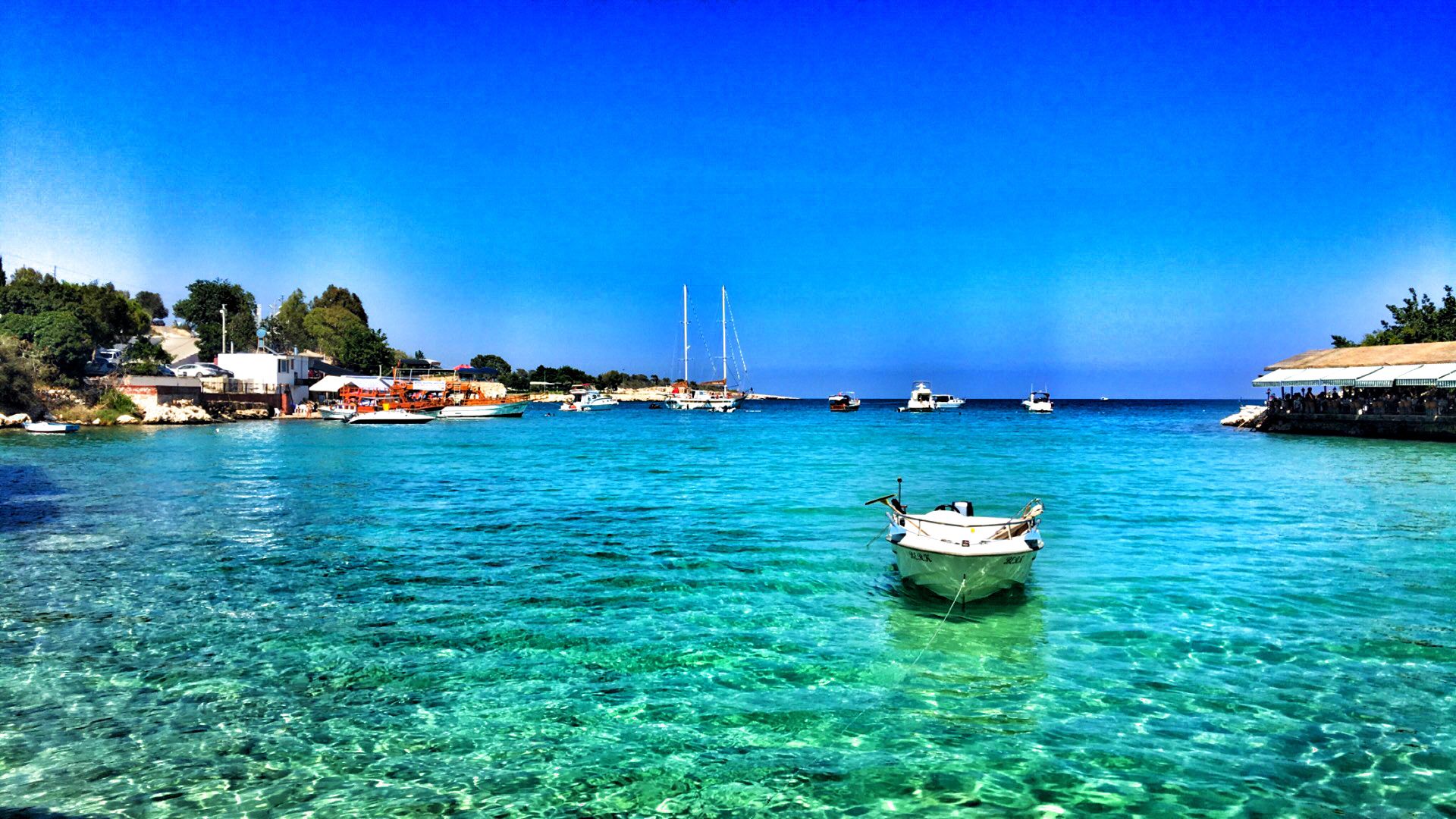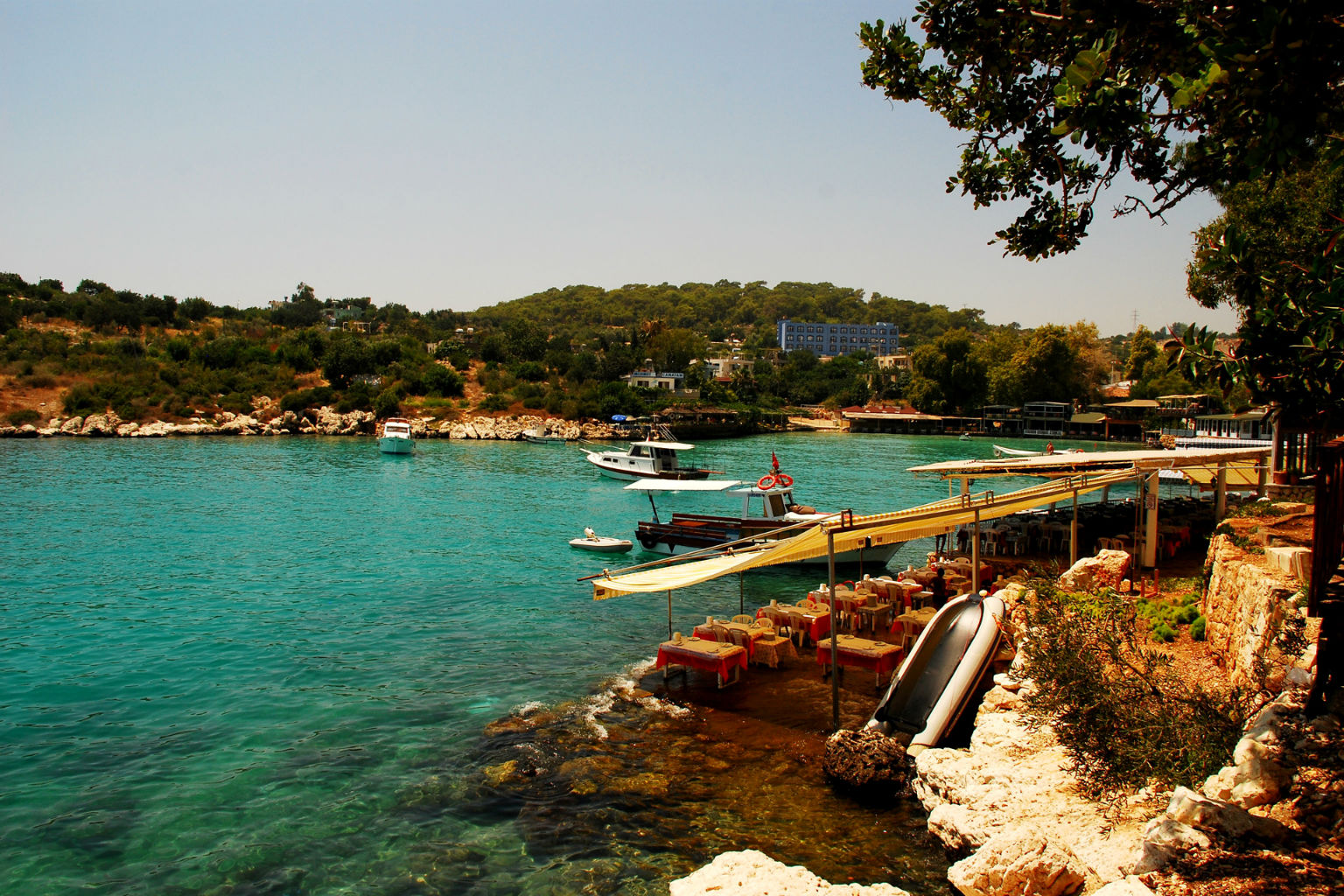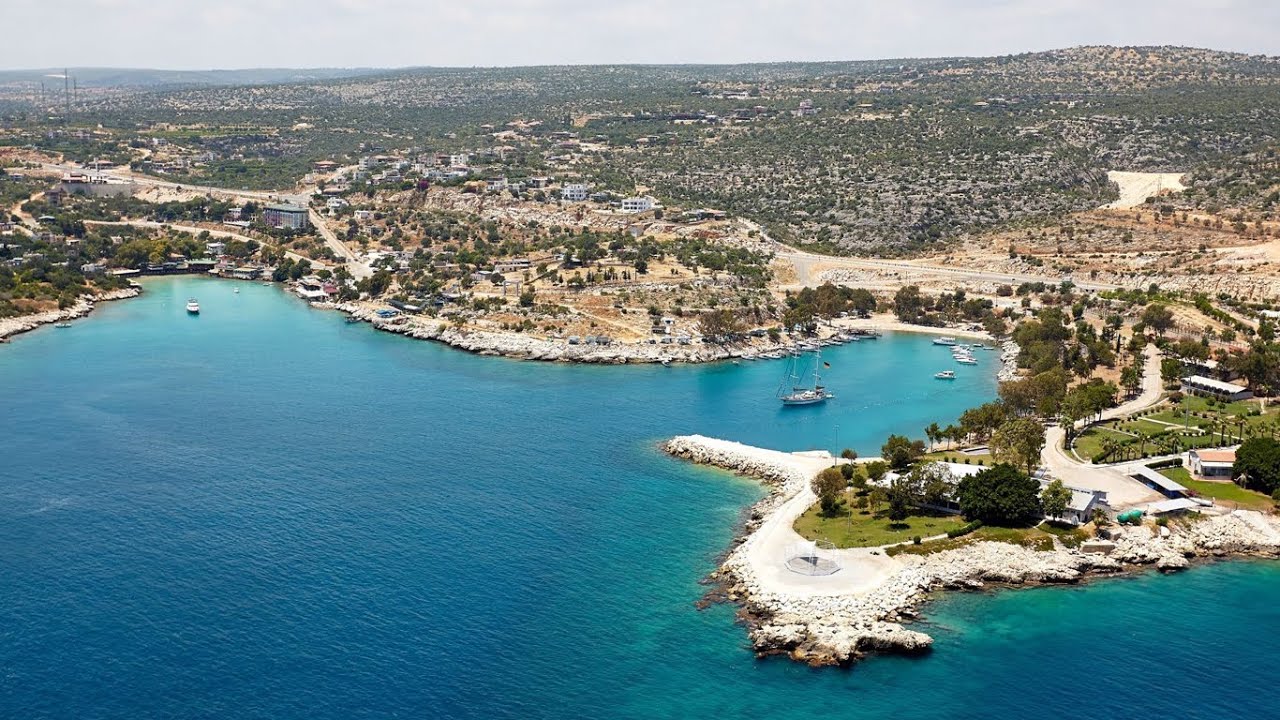Have you ever imagined a place on the Mediterranean where the salty scent of the sea mingles with the freshness of an ice-cold mountain spring, where the whispers of mythological goddesses accompany the sound of the waves? This is not a dream or a legend; this is Narlıkuyu, a hidden paradise in the Silifke district of Mersin, tucked away on the D400 highway. If your travel plans this summer include a getaway filled with both history and flavor, the list of things to do in Narlıkuyu is surprisingly rich and inviting. Known in ancient times as Porto Calamie, or Reed Harbor, today it tells you a story flowing from Roman baths, combined with an unparalleled seafood feast served over cool waters running beneath your feet. Let's open the doors to this unique experience together.
Visit the small but impressive museum of the Three Graces Mosaic
The first stop on your Narlıkuyu adventure should be the Narlıkuyu Mosaic Museum, which will take you back in time to the 4th-century Roman Empire. Don't mistake this for a large, classic museum with many halls. On the contrary, it's a special structure consisting of a single room, but one that holds thousands of years of secrets and art within its walls. This museum was actually built to protect the floor of a bathhouse commissioned by Poimenios, the governor of Korykos (modern-day Kızkalesi) at the time.
So, what made this bathhouse so special? The answer lies in the water, the lifeblood of Narlıkuyu. Poimenios discovered this fresh, cold water, believed to be healing, at the point where it mixed with the sea in Narlıkuyu, having traveled from the depths of the nearby Cennet (Heaven) sinkhole, and he built this bath for public use. The famous mosaic we admire today adorned the floor of this very bath.
At the center of the mosaic, the three daughters of Zeus, the chief god of Greek mythology, are depicted: Aglaia (Splendor), Thalia (Good Cheer), and Euphrosine (Mirth). These muses of art and beauty are known as the Three Graces, or Kharites in mythology. This work of art, created from tiny black, white, and yellow stones, is surrounded by bird and flower motifs native to the region. The most poignant part of the mosaic is the Greek inscription on it. Poimenios speaks to us from 1600 years away:
O friend, if you ask who found the hidden source of this beautiful bath's water, know that it is Poimenios, the one who governs the holy islands with honesty and is a friend to the emperors..
The story of how this priceless work has survived almost perfectly to this day is just as interesting. For years, a village coffee house stood on top of the mosaic, unknowingly protecting it. This treasure was finally uncovered when a conscious citizen notified the authorities, and it was preserved with the construction of the current museum building. So, when you come to Narlıkuyu, you will not only witness a mosaic but also see how a region's geography is intertwined with history and how a piece of heritage was saved by sheer luck.

Pick a fish restaurant built where underground waters flow into the sea
When you leave the Mosaic Museum, you'll see that the story of the water Poimenios found healing 1600 years ago is not over. That same water now gurgles beneath your feet, flowing into the sea and giving Narlıkuyu's famous fish restaurants their unique atmosphere. This is the most magical feature that sets Narlıkuyu apart from other coastal towns. The restaurants consist of wooden piers built over the sea, and your table is literally on the water.
Don't be surprised by the coolness that hits your face the moment you sit down. The water flowing beneath you is around 15-16 degrees Celsius, even on the hottest summer day. This is the chill of the underground river from the Cennet sinkhole meeting the sea. The water is so clear that you can see every shade of turquoise and green, count the stones at the bottom of the sea, and watch schools of sea bass swimming around your table. If you're lucky, you might even witness a sea turtle gliding slowly past you.
This atmosphere is not just a dining experience; it's almost a form of therapy. The sound of the water, the cool air mixed with the scent of iodine and seaweed, washes away all the fatigue of the city. With this feature, Narlıkuyu holds a special place amongMersin's unique coastal towns and promises its visitors much more than an ordinary dinner. Here, time slows down, and you feel at one with nature.

Eat fresh seafood and salads over the ice-cold spring waters
Such a unique atmosphere must, of course, be crowned with unforgettable flavors. Narlıkuyu's cuisine, much like its geography, is clear, fresh, and full of character. You won't find a chaotic spread of dozens of mezes here. Instead, the region's freshest and most special products are presented with a simple elegance.
When you sit down, the waiter's first question will likely be, Would you like the Lagos? The Lagos (also known as Grouper or Orfoz), one of the most prized fish of the Mediterranean, is Narlıkuyu's signature dish. The version prepared as Lagos şiş (Grouper skewers), with its tender meat, leaves an unforgettable taste on the palate. Of course, the options are not limited to this; freshly caught sea bass, red sea bream (sinarit), shrimp in butter, or a delicious fried calamari are also wonderful alternatives.
Narlıkuyu's culinary secret lies not only in its fish but also in its distinctive mezes. Chief among these is definitely the kaya koruğu turşusu (pickled rock samphire). The slightly sour and refreshing taste of this special plant, which grows on the seaside rocks, perfectly balances the flavor of the fish. The Narlıkuyu table is complete with crushed green olives and a salad with plenty of greens served alongside. The philosophy of this table is simple: less is more, offering the freshest and most local ingredients.
After finishing your meal, before you say goodbye to this pleasant coolness, you can top off this feast by eating a hot, freshly made lokma (a type of sweet fritter) from one of the nearby vendors.

While You're Here...
The beauty of Narlıkuyu lies not only within its own borders but also in the richness of its surroundings. You can use it as a base and discover incredible places with just a 5-10 minute drive.
Cennet and Cehennem (Heaven and Hell) Sinkholes: Located just 2 km from Narlıkuyu, these geological wonders are like gates opening to a mythological world. You can descend 450 steps into Cennet, a massive cave formed by the collapse of an underground river, and visit the ancient church at the bottom. Right next to it, the Cehennem pit, which cannot be entered due to its steep cliffs, offers a dizzying view that lives up to its name.
Astım Mağarası (Asthma Cave): Located very close to Heaven and Hell, this cave is a mysterious place adorned with stalactites and stalagmites, accessible by a spiral staircase. It gets its name from the belief that its high-humidity air is good for asthma patients. Also known as Dilek Mağarası (Wish Cave) by the locals, this cave is a great stop to cool off and feel the power of nature.
Kızkalesi (Maiden's Castle): Just a 5-minute drive from Narlıkuyu, this iconic castle built on an islet in the middle of the sea is the most famous symbol of the region. With the legend of the snake told about it and its enchanting appearance, it is one of the must-see places.
This trio (Heaven-Hell, Asthma Cave, and Maiden's Castle) can turn your Narlıkuyu trip into a full-day adventure and take you on an unforgettable journey within Places to Visit in Mersin.
Bibliography
For more detailed and official information about the mythological story of the Three Graces in the Narlıkuyu Mosaic Museum and the history of the bathhouse, you can consult the resources of the Republic of Turkey Ministry of Culture and Tourism.
Source: Republic of Turkey Ministry of Culture and Tourism, Narlıkuyu Mosaic Museum. [https://www.kulturportali.gov.tr/turkiye/mersin/gezilecekyer/narlikuyu-mozaik-muzesi]
Frequently Asked Questions (FAQ)
1. Can you swim in the sea in Narlıkuyu? The bay of Narlıkuyu itself is quite cold for swimming (around 15-16 degrees Celsius) due to the underground spring water, so it is not generally preferred. However, there are wonderful alternatives just a few minutes' drive away, such as Akkum Beach, the Akyar coves, or the famous Kızkalesi Beach.
2. Is there an entrance fee for the Narlıkuyu Mosaic Museum, and what are the visiting hours? Yes, there is an entrance fee for the museum, and the MüzeKart (Museum Card) is valid. However, entrance fees and visiting hours may vary depending on the season. We recommend confirming the most up-to-date information on the official website of the Republic of Turkey Ministry of Culture and Tourism or by contacting the museum before you go.
3. When is the best time to visit Narlıkuyu? The ideal times to visit Narlıkuyu are in the spring and autumn months (May, June, September). During these periods, the weather is not oppressively hot, and the area is quieter than in the summer months. However, if you want to cool off by the famous ice-cold water, July and August are also great options.


 English
English Türkçe
Türkçe